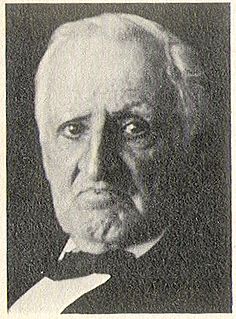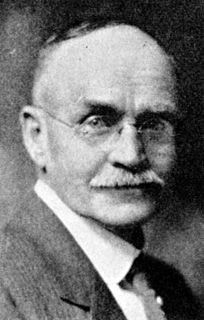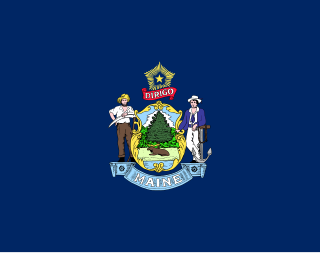
Cyrus Thomas was a U.S. ethnologist and entomologist prominent in the late 19th century and noted for his studies of the natural history of the American West.

Alpheus Spring Packard, Jr., LL.D. was an American entomologist and palaeontologist. He described over 500 new animal species – especially butterflies and moths – and was one of the founders of The American Naturalist.
Paul Wilson Oman was an American entomologist and specialist on leafhopper taxonomy.
Zeno Payne Metcalf was an American entomologist specialising in Auchenorrhyncha.

Clarence Preston Gillette was an American entomologist.

Joseph Albert Lintner was an American entomologist. He held the position of State Entomologist from 1881 following the creation of this post by the federal government. He served until 1898. Lintner wrote 900 scientific papers and 13 of the Report on the injurious and other insects of the State of New York on crop pests and injurious insects associated with agriculture. His collection is in the Albany Museum of Natural History.
BugGuide is a website and online community of naturalists, both amateur and professional, who share observations of insects, spiders, and other related creatures. The website consists of informational guide pages and many thousands of photographs of arthropods from the United States and Canada which are used for identification and research. The non-commercial site is hosted by the Iowa State University Department of Entomology. BugGuide was conceived by photographer Troy Bartlett in 2003 and since 2006 has been maintained by Dr. John VanDyk, Adjunct Assistant Professor of Entomology and Senior Systems Analyst at Iowa State University. The website has been recognized for helping change public perception of insects.
Professor Zeyaur R. Khan is a Principal Scientist at International Centre of Insect Physiology and Ecology (icipe). He has dedicated his 30-year career as an international agricultural scientist to advancing the science and practice of agriculture by studying and applying chemical ecology, behavior, plant-plant and insect-plant interactions to improve farm productivity to combat poverty and food insecurity in Africa. He is responsible for the discovery and wide scale implementation of a pro-poor scientific innovation for enhancing food security and environmental sustainability in Africa]. This was achieved through the biologically-based IPM technology called "Push-Pull", developed for small-holder cereal-livestock African farmers. Prof. Khan’s work is an example demonstrating that creativity and innovation in science can provide practical solutions for the real problems of thousands of small-holder poor farmers and promote their food security and sustainable livelihoods.

Charles Henry Fernald was an American entomologist, geologist, and zoologist, who is credited as the first college professor of economic entomology. Fernald grew up at Fernald Point in Mount Desert, Maine, and went on to prepare for college at Maine Wesleyan Seminary before joining the navy in 1862. After receiving a master's degree from Bowdoin College he went on to serve as principal of several academies in Maine. Throughout his career he would document and describe several species of microlepidoptera and in 1886 became the first full-time professor and chair of the natural sciences at what is now the University of Massachusetts Amherst. Fernald Hall and the Fernald Entomological Society at the same institution, are named for him and his son, Henry Torsey Fernald, who would later hold the same position as his father. His wife, Maria Elizabeth Fernald, was a noted entomologist in her own right.

John Merton Aldrich was an American zoologist and entomologist. Aldrich was the Associate Curator of Insects at the United States National Museum. He is considered one of the most prolific entomologists in the study of flies.

Elmer Darwin Ball was an American entomologist. Ball is known for his contributions to the knowledge of the leafhoppers, treehoppers, froghoppers, and other related insects.
Carl John Drake (1885—1965) was an American entomologist and zoologist.

Charles Gordon Hewitt was a Canadian economic entomologist and pioneer of conservation biology. He was appointed dominion entomologist of Canada in 1909. He helped pass the Destructive Insect and Pest Act in 1910, and implemented significant changes in the Department of Agriculture. He published several books on the subjects of biology and entomology, and helped to further the 1916 treaty between Canada and the United States for the protection of migratory birds.
Owain Westmacott Richards FRS was a British entomologist and ecologist who worked as Professor of Zoology and Applied Entomology, Imperial College, London and an editor of the Journal of Animal Ecology.
Harry Scott Smith, an entomologist and professor at University of California, Riverside (UCR), was a pioneer in the field of biological pest control.

Tarakad Vaidyanatha Ramakrishna Ayyar was a pioneer Indian entomologist who worked in the agricultural department in British India. He described numerous species of insect, especially the thrips, catalogued Indian insect pests, taught, and wrote a landmark textbook of entomology, the Handbook of Economic Entomology for South India (1940).
Taracad Narayanan Ananthakrishnan, was an Indian entomologist and insect ecologist. His areas of specialisation were Entomology, Cecidology and Chemical Ecology. He did extensive study of Indian thrips (Thysanoptera) and made immense contributions to this field of science.
Frej Ossiannilsson was a Swedish entomologist who specialized in Auchenorrhyncha, and is known also for discovering vibrational communication of insects. He is considered a pioneer of biotremology for work on behavioural and anatomical basis of vibrational communication.
Halbert Marion Harris was an American entomologist who worked on the systematics of the American Nabidae and worked with the Ford Foundation in the development of entomology in India.













